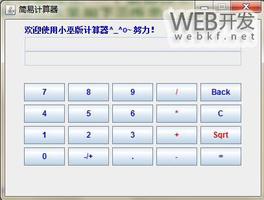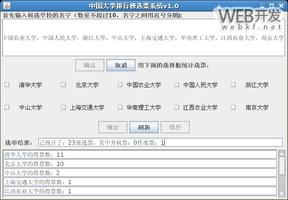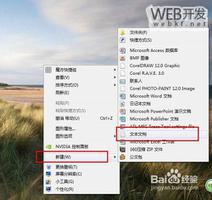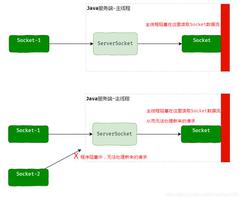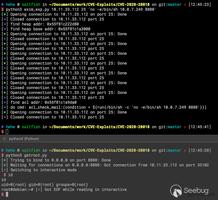201521123115《Java程序设计》第7周学习总结

以你喜欢的方式(思维导图或其他)归纳总结集合相关内容。
2. 书面作业
1.ArrayList代码分析
1.1 解释ArrayList的contains源代码
1.2 解释E remove(int index)源代码
1.3 结合1.1与1.2,回答ArrayList存储数据时需要考虑元素的类型吗?
1.4 分析add源代码,回答当内部数组容量不够时,怎么办?
1.5 分析private void rangeCheck(int index)源代码,为什么该方法应该声明为private而不声明为public?
1.1 源代码
public boolean contains(Object o) {
return indexOf(o) >= 0;
}
遍历元素,如存在查找的元素,返回true,否则返回false;在源代码的注释中,Returns true if this list contains the specified element.如果此列表包含指定元素,则返回true
1.2 源代码
public E remove(int index) {
rangeCheck(index);
modCount++; E oldValue = elementData(index);
int numMoved = size - index - 1;
if (numMoved > 0)
System.arraycopy(elementData, index+1, elementData, index,
numMoved);
elementData[--size] = null; // clear to let GC do its work
return oldValue;
}
查找此ArrayList中是否包含要找的元素,若有,返回true,否则返回false;在源代码注释中,Removes the element at the specified position in this list.删除此列表中指定位置的元素。
1.3 不需要,因为其参数为Objcet类型的对象,所有对象皆为Object。
1.4 源代码注释中,Appends the specified element to the end of this list将指定的元素到这个列表的末尾,当内部数组容量不够时,需要增量,即增加数组长度,ensureCapacityInternal(size + 1); // Increments modCount!!增加数组长度
1.5private void rangeCheck(int index) {
if (index >= size)
throw new IndexOutOfBoundsException(outOfBoundsMsg(index));
}
因为private修饰的实例方法只能在本类被使用。不可被外部类调用,保证了一个封装性。
2.HashSet原理
2.1 将元素加入HashSet(散列集)中,其存储位置如何确定?需要调用那些方法?
2.2 选做:尝试分析HashSet源代码后,重新解释1.1
2.1HashSet查找某个对象时,首先用hashCode()方法计算出这个对象的Hash码,HashCode值决定了该元素的存储位置,根据Hash码到相应的存储区域用equals()方法查找。
2.2HashSet与ArrayList的contains有异曲同工之妙,最后的结果都是没有重复的元素;HashSet的源代码中用到了HashMap,我个人理解,是不是将hashcode看做key,将数组元素的值看做value,将其通过HashSet存储在散列表。
3.ArrayListIntegerStack
题集jmu-Java-05-集合之5-1 ArrayListIntegerStack
3.1 比较自己写的ArrayListIntegerStack与自己在题集jmu-Java-04-面向对象2-进阶-多态、接口与内部类中的题目5-3自定义接口ArrayIntegerStack,有什么不同?(不要出现大段代码)
3.2 简单描述接口的好处.
3.1存储方式不同,前者使用ArrayList,虽然本质也是数组存储,但不需要一开始就要考虑数组长度,后者是数组存储,并且需要一个指针top来确定栈顶元素;前者不需要考虑栈满的情况,后者受一开始输入的数组长度的约束,需要考虑栈满的情况
3.2接口拥有更大的灵活性,同时接口也是可插入性的保证
4.Stack and Queue
4.1 编写函数判断一个给定字符串是否是回文,一定要使用栈,但不能使用java的Stack类(具体原因自己搜索)。请粘贴你的代码,类名为Main你的学号。
4.2 题集jmu-Java-05-集合之5-6 银行业务队列简单模拟。(不要出现大段代码)
4.1
for (int i = 0; i < n; i++) {
if(q1.size()2){
System.out.printf(q1.poll()+" "+q1.poll()+" ");
if(q2.size()>=1)
System.out.printf(q2.poll()+" ");
}
if(Num[i]%21)
q1.add(Num[i]);
else
q2.add(Num[i]);
}
while(q1.size()>1){
System.out.printf(q1.poll()+" ");
if(q1.size()1)
System.out.printf(q1.poll()+"");
while(q2.size()>1)
System.out.printf(q2.poll()+" ");
if(q2.size()1)
System.out.printf(q2.poll()+"");
in.close();
}
4.2
while(!link1.isEmpty()||!link2.isEmpty()) {
Integer a1=link1.poll();
if(a1!=null)
{
if(link1.isEmpty()&&link2.isEmpty())
System.out.println(a1);
else
System.out.print(a1+" ");
}
Integer a2=link1.poll();
if(a2!=null)
{
if(link1.isEmpty()&&link2.isEmpty())
System.out.println(a2);
else
System.out.print(a2+" ");
}
Integer b=link2.poll();
if(b!=null)
{
if(link1.isEmpty()&&link2.isEmpty())
System.out.println(b);
else
System.out.print(b+" ");
}
}
结果如下:
5.统计文字中的单词数量并按单词的字母顺序排序后输出
题集jmu-Java-05-集合之5-2 统计文字中的单词数量并按单词的字母顺序排序后输出 (不要出现大段代码)
5.1 实验总结
while (input.hasNext()) {
String word = input.next();
if (word.equals("!!!!!"))
break;
//不同的单词加入集合中
else if (!str.contains(word))
str.add(word);
}
统计文本出现的词汇并存储,此时要想到Set,Set集合的对象是不重复的,但要是对对象进行排序,需要的是TreeSet,TreeSet具有排序功能,HashSet可以用作无序的词汇存储,因而本题不使用HashSet。
- 码云上代码提交记录及PTA实验总结
题目集:jmu-Java-05-集合
3.1. 码云代码提交记录
以上是 201521123115《Java程序设计》第7周学习总结 的全部内容, 来源链接: utcz.com/z/393383.html

